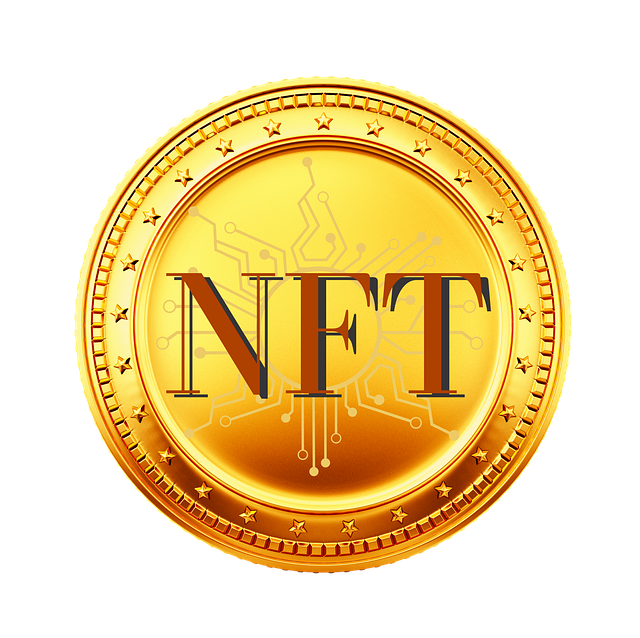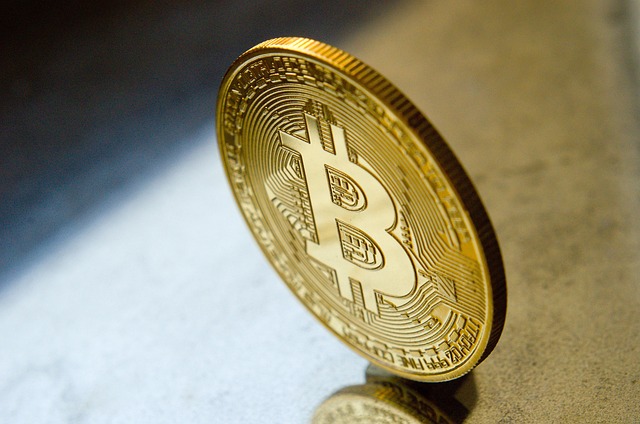Fastest Trading Platform for Meme Coins — Top Picks to Trade Quickly
Author: Jameson Richman Expert
Published On: 2025-11-02
Prepared by Jameson Richman and our team of experts with over a decade of experience in cryptocurrency and digital asset analysis. Learn more about us.
Fast execution can be the difference between profit and loss when trading meme coins. This article explains how to identify the fastest trading platform for meme coins, what technical and market factors determine speed, and which platforms and strategies professional traders use to execute orders quickly while managing risk. You’ll get practical setup steps, exchange comparisons, and links to trusted resources to help you trade meme tokens more efficiently.

Why speed matters for meme coin trading
Meme coins are highly volatile, often experiencing sharp price moves in seconds during pumps, listings, or news-driven events. A fast trading platform helps you:
- Reduce slippage — faster execution reduces the chance that price moves between submitting and filling your order.
- Capture short-lived moves — some trades are profitable only within a narrow time window.
- React to liquidity changes — when order book depth dries up, speed allows you to adjust or cancel orders before large price swings occur.
- Automate strategies — low-latency APIs and websockets enable bots and algorithmic strategies to arbitrage or market-make.
For background on meme coins and how quickly they can move, review established overviews like the Dogecoin page on Wikipedia and the general cryptocurrency article.
What makes a trading platform fast?
“Fast” can mean different things depending on context. Consider these technical and market factors:
- Matching-engine latency — how quickly the exchange matches orders. Exchanges with highly optimized matching engines (measured in micro- or milliseconds) provide faster fills.
- API and WebSocket performance — for bot traders, low-latency and high-throughput API/WebSocket feeds matter more than UI responsiveness.
- Order book depth and liquidity — a deep order book reduces price impact; an otherwise fast exchange won’t help if there’s no liquidity for the token.
- Network throughput for on-chain trades — on DEXs, blockchain confirmation speeds and gas congestion determine settlement time.
- Geographic and infrastructure factors — colocation, CDN usage, and server locations affect latency for global traders.
- Fee structure and incentives — aggressive maker-taker fees and liquidity programs can increase order-book depth and execution speed.
Centralized Exchanges (CEX) vs Decentralized Exchanges (DEX)
CEXs generally offer the lowest latency for executing trades because matching occurs off-chain on optimized servers. DEXs, especially on congested networks, can be slower due to on-chain confirmations and gas auctioning (e.g., Ethereum). However, some Layer-2 solutions and fast chains (BSC, Solana) and DEXs built on them (PancakeSwap, Raydium) can offer near-CEX responsiveness for memecoin swaps.
For traders seeking fast on-chain swaps, evaluate the blockchain’s block time and average gas cost. For example, Binance Smart Chain and Solana typically offer lower gas and faster finality than Ethereum mainnet.
Top fastest trading platforms for meme coins (2025)
Below are platforms that consistently provide fast execution for meme coin trading, with practical pros and cons. Each entry highlights the aspects that matter to speed-focused traders.
1. Binance (Centralized)
Why it’s fast: Binance operates a high-performance matching engine, deep liquidity across thousands of trading pairs, and low-latency APIs. Large market depth for trending meme coins often appears quickly after listings, reducing slippage.
- Pros: Industry-leading liquidity, robust APIs, margin and futures for advanced strategies.
- Cons: KYC is required for higher limits, and periodic maintenance can affect availability.
- Get started: Register on Binance.
For traders comparing fee structures and execution cost effects between major exchanges, see the in-depth comparison of Bybit vs Binance trading fees which helps quantify real cost differences when speed matters.
2. Bybit (Centralized)
Why it’s fast: Bybit has focused on a low-latency trading engine and competitive liquidity, especially on derivatives and selective spot meme pairs. Bybit’s API offers reliable websocket feeds and quick order acknowledgements.
- Pros: Strong derivatives liquidity, responsive API, user-friendly interface for fast manual trades.
- Cons: Some meme coins are listed later than on other CEXs; spot liquidity varies by token.
- Get started: Join Bybit.
See the fee comparison article referenced above for specific trading-fee impacts that influence the effective speed (i.e., ability to enter and exit quick trades without costs eroding profit).
3. Bitget (Centralized)
Why it’s fast: Bitget is optimized for both spot and derivatives trading, with reliable APIs and decent liquidity on many meme tokens. They offer advanced order types that can be useful in fast markets.
- Pros: Competitive matching engine, social trading features, strong derivatives marketplace.
- Cons: Liquidity depth can be uneven across smaller meme coins.
- Get started: Register on Bitget.
4. MEXC (Centralized)
Why it’s fast: MEXC lists many new meme tokens early, which can mean access before they hit the largest CEX order books. With a lean matching engine and frequent token listings, MEXC can be a fast source for new opportunities—though liquidity may be thinner at first.
- Pros: Rapid listings, many small-cap meme tokens, functional API.
- Cons: Higher slippage on newly listed tokens; due diligence is essential.
- Get started: Open a MEXC account.
5. Fast DEXs and Layer-2 solutions
For traders who prefer decentralized swaps, these options provide near-instant swaps depending on the chain:
- PancakeSwap (BSC) — fast block times, low gas fees, widely used for BEP-20 meme tokens.
- QuickSwap (Polygon) — low gas and quick finality on Polygon, good for ERC-20 based memecoins bridged to Polygon.
- Raydium and Serum (Solana) — extremely low latency and low fees on Solana-native meme tokens.
Remember: on DEXs, “speed” also depends on gas auction dynamics (front-running, MEV) and the wallet/API path you use to sign transactions. Using RPC nodes with lower latency and private mempools can improve execution time.

How to set up for the fastest executions
Speed is not just about the platform — your setup matters. Below are practical steps to reduce latency and improve fill quality.
Pre-trade preparation
- Fund relevant pair balances in advance — keep stablecoins or base assets on the exchange to avoid deposit delays during a trade window.
- Choose the right pairs — trade the token against the deepest pair (USDT, BUSD, BTC, or ETH) to minimize slippage.
- Set price alerts — use platform or third-party alerts to react the instant volume spikes begin.
Order types and execution techniques
- Market orders fill quickly but can suffer heavy slippage on thin order books; use cautiously.
- Limit orders reduce slippage and can get priority in the book if set at attractive prices; consider limit orders with small price offsets for speed and control.
- Post-only or IOC orders — use these to ensure maker fees or immediate fills without leaving partially matched orders.
Use APIs and WebSockets
If you trade often or need split-second timing, APIs are essential. Use WebSocket feeds for order-book updates and REST APIs for order placement when necessary. Consider:
- Listening to the WebSocket feed to detect order-book pressure and then using REST API to submit orders.
- Respecting API rate limits to avoid rejections; implement exponential backoff and reconnection strategies.
- Testing strategies on testnets before live deployment.
Infrastructure improvements
- VPS or colocated servers — run your bots on servers close to exchange endpoints to shave milliseconds off round-trip time.
- Use low-latency RPC nodes for DEX trading instead of slow public nodes.
- Optimize order logic — limit messages, precompute prices, and reuse connections.
API trading and bots: building for speed
Automated trading can outperform human reaction times. When building bots, follow these recommendations:
- Use asynchronous I/O and non-blocking libraries (e.g., asyncio in Python) to manage websockets and REST calls simultaneously.
- Keep a local copy of the order book and compute derived metrics (spread, depth at X%) to decide on trades.
- Implement order management — cancel stale orders quickly and use sequence numbers to reconcile fills.
- Log everything to diagnose missed fills, rejected orders, and latency bottlenecks.
Managing risk when trading meme coins fast
Fast trading increases execution risk. Use the following risk controls:
- Position sizing — limit exposure per trade (e.g., 1–2% of trading capital) to survive sudden drawdowns.
- Use stop-losses and take-profit orders to automate exits; be mindful that stop-market orders can still experience slippage in extreme moves.
- Check token contract safety — look for liquidity locks, renounced ownership, and third-party audits before committing large capital on DEXs.
- Keep withdrawal limits and KYC in mind — on CEXs, ensure you can withdraw or convert quickly if you need to move funds.
For general investor protection and to understand risks associated with speculative trading, refer to official investor education resources such as the U.S. Investor.gov or the SEC’s consumer alerts on crypto.

Speed vs safety: balancing fast execution with diligence
Speed should not trump safety. A common trap is chasing a fast listing on a smaller exchange without verifying the token. Steps to balance speed and diligence:
- Check token source code (Etherscan/BscScan) and audit reports where available.
- Verify team identities and liquidity lock status.
- Cross-reference market interest using social metrics (subreddit activity, Twitter/Discord). For curated coin ideas and community-sourced signals, you can review guides like What coin to buy today Reddit in 2025: The ultimate guide.
Also, if you’re thinking about long-term exposure to crypto beyond memecoins, resources like this long-term Bitcoin outlook article can help frame macro risk considerations: Bitcoin price prediction by 2050 — long-term outlook.
Examples and micro case studies
Below are two hypothetical scenarios that illustrate how speed and platform choice matter.
Example 1 — Quick pump on a newly listed memecoin
Token X lists on Exchange A with low initial liquidity, then surges 200% in 45 seconds. A trader with pre-funded USDT on Exchange B (a larger CEX where the token listed near-simultaneously) places a market buy and suffers 10% slippage due to shallow books. Another trader who used a low-latency limit order at a slightly higher price achieved a fill with 2% slippage and sold into the peak using an automated take-profit order. The lesson: pre-funding, correct order type, and quick cancellation logic matter.
Example 2 — Arbitrage between DEX and CEX
Price on a BSC DEX is 5% higher than on a major CEX. An arbitrage bot that monitors both order books and executes across exchange APIs and a high-speed RPC node can capture the spread after covering gas and fees. Without fast execution and pre-funded accounts on both chains, the opportunity disappears in seconds.
Checklist: Choosing the fastest trading platform for meme coins
Use this checklist when evaluating platforms:
- Does the exchange provide a low-latency matching engine and public API?
- Is there sufficient liquidity for the specific meme coin pair?
- What are the maker/taker fees and how will they impact rapid trade profitability?
- Does the platform list tokens quickly (for early access) and does it have safeguards against rug pulls?
- Are advanced order types and WebSocket feeds available?
- Does the exchange support the blockchain/bridge where the token exists (BSC, Solana, Polygon, etc.)?
- Are KYC, deposit/withdrawal speeds, and security features acceptable for your needs?

Additional resources and reading
Further reading can help you refine strategy and execution:
- Investopedia on slippage and order types: Slippage (Investopedia).
- General crypto investor protections and education: U.S. SEC and Investor.gov.
- Real-time token guides and trading tips: Live XRP price and smart trading guide (example of real-time tracking strategies).
- Considerations for faith-based investors evaluating crypto savings and yield: Is Binance Earn Halal? A Shariah guide.
Final recommendations
To identify the fastest trading platform for meme coins for your needs:
- Start with major CEXs (Binance, Bybit, Bitget) for lowest latency and deep liquidity. Open accounts in advance and keep balances pre-funded: Register on Binance, Join Bybit, Register on Bitget.
- Use MEXC for early access to new listings but trade smaller sizes initially: Open a MEXC account.
- For on-chain swaps, pick fast chains (BSC, Solana, Polygon) and optimized RPC nodes; set slippage tolerances conservatively to avoid sandwich attacks.
- Automate where possible with robust API/WebSocket implementations and host bots close to exchange endpoints to reduce latency.
- Always perform contract and liquidity checks before committing significant capital, and use sound risk management.
For ongoing updates, trading guides, and coin ideas useful to speed-focused traders, explore resources such as the in-depth coin selection guide at What coin to buy today Reddit in 2025: The ultimate guide and the long-term market context available at Bitcoin price prediction by 2050 — long-term outlook.
Closing note
Speed is a critical competitive edge in meme coin trading, but it’s only one piece of a successful trading system. Pair a fast platform with disciplined risk controls, reliable infrastructure, and thorough due diligence. Combining these elements will improve your chances of capturing the short-lived opportunities meme coins often present while protecting capital from the many risks that come with high-speed trading.